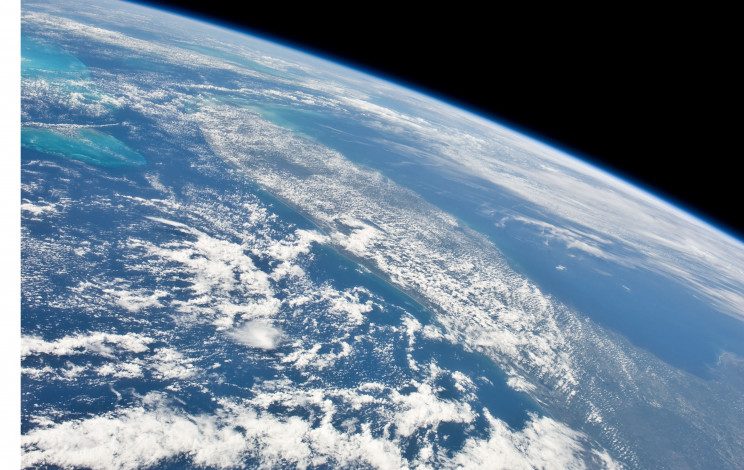
Lead Image: Our world is a pale blue dot, and we have just one world to live in. We should take care of her and she will do the same. Image Credit: NASA.
The world today faces a mounting environmental crisis. Rising levels of CO2 are leading to global warming, the acidification of our oceans, and the destruction of ecosystems worldwide. Worse yet, these changes have led to feedback mechanisms that are making the situation worse. In short, Climate Change constitutes an existential threat that demands action.
The extent of Climate Change and the dangers it poses are regularly cataloged by the Intergovernmental Panel on Climate Change (IPCC). This United Nations body was created to provide policymakers with regular scientific assessments, notify them of the implications for future changes, and recommend adaptation and mitigating options.
But is this enough? Adaptation and mitigation mean focusing on limiting the extent of the damage and dealing with whatever comes our way. In response, there is a growing movement to introduce a third priority to Climate Change action – restoration. Rather than merely limiting or absorbing the damage, we should reverse it.
Given that carbon dioxide emissions are the driving factor behind climate change, restoration strategies call for the active removal of CO2 from the atmosphere – a process known as Carbon Dioxide Removal (CDR). Alongside research into alternative fuels, renewable energy, and Carbon Capture (CC) operations, CDR may be the key to preventing ecological disasters in this century.
One organization looking to make this happen is the Foundation for Climate Restoration (F4CR), a non-profit and non-partisan organization based in Silicon Valley. Through efforts designed to raise awareness, promote innovation, and help entrepreneurs find markets for their methods, they intend to mobilize humanity and its resources towards the common goal of saving planet Earth.
The threat of Climate Change
Since it was created in 1988, the IPCC has issued multiple Assessment Reports and multiple Special Reports. The Fifth Assessment Report (AR5) was the most recent, which was issued in 2014 and will be followed by AR6 sometime in September 2022. The data and findings of each are produced by three Working Groups, each focusing on a different aspect of the problem.
Working Group I (WGI) examines the physical science underpinning past, present, and future climate change; WGII is responsible for assessing the impacts, adaptation, and vulnerabilities related to climate change; and WGIII focuses on assessing methods to reduce greenhouse gas emissions and remove greenhouse gases from the atmosphere.
To date, the goal of these reports is to indicate how the industrialized nations of the world need to commit to climate action to keep global temperatures from exceeding a certain threshold. According to the AR5, average global temperatures will rise by 2.7 to 3.6 ºF (1.5 ºC to 2 ºC) by 2030, depending on atmospheric CO2 levels.
If the industrialized nations of the world can reduce their annual emissions by 50 percent, atmospheric CO2 levels can be kept to between 430 and 480 gigatons (GTs). This will mean that the average temperature increase between now and 2030 will be limited to 2.7 ºF (1.5 ºC). However, a change of just this much will still have significant ecological, economic, and humanitarian crises.
At the Earth’s mid-latitudes, the hottest days will be up to 5.4 ºF (3 ºC) hotter, while at higher latitudes, the coldest nights will be roughly 8 °F (4.5 °C) warmer. In the Arctic, temperatures will warm by about 10 °F (5.5 °C), and cold spells will be shorter, which means the polar caps will continue to shrink, and the oceans will absorb more heat come summer!
It is also estimated that an average increase of 14 percent of Earth’s population will be exposed to severe heat waves at least once every five years. Increases in heatwaves also mean that severe droughts will happen in many parts of the world, drastically impacting agriculture and increasing water stress in urban areas.
This will cause an increase in “excess deaths” (non-natural causes) associated with heat stroke, starvation, exposure, dehydration, and airborne diseases. It will also trigger conflict in particular hard-hit regions, mainly in the equatorial regions of the planet. Mass migrations will ensue as life becomes too difficult for the location populations.
As the Syrian Civil War and the most recent Southern Border Crisis will attest, the mass movement of people across national boundaries can invariably lead to humanitarian crises. This is especially true when nations decide to close their borders and harden their hearts against migrants seeking refuge in their country.
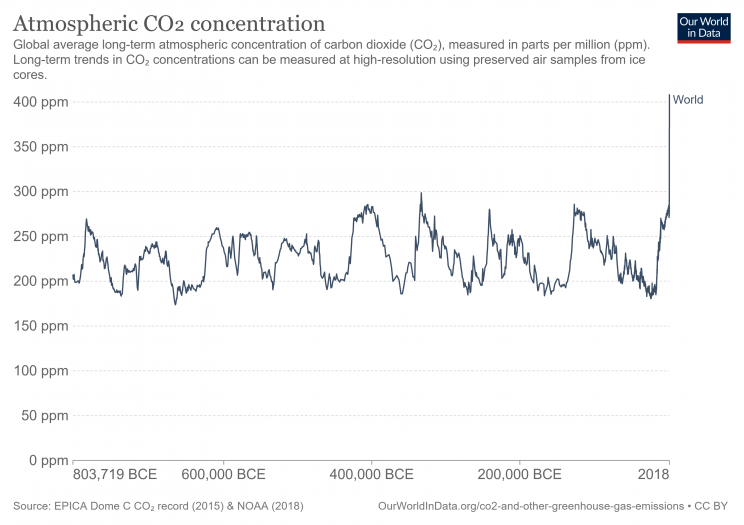
Net-zero not enough?
In addition to calling for sweeping cuts to CO2 emissions, the IPCC’s latest report also established a timeline for action. To avoid global catastrophe, the report states, a 50 percent reduction in emissions will need to happen by 2050. But even if we accomplish that, it won’t be enough to avert catastrophe for millions of people worldwide.
To make matters worse, curbing emissions at this point will have a very limited effect overall. According to the National Oceanic and Atmospheric Administration (NOAA), the hundreds of billions of tons of excess CO2 that will drive climate change are already in our atmosphere. As a result, even “net-zero” emissions (where CO2 emissions are reduced to zero by 2030) will not be enough to avert catastrophe.
For this reason, there is a growing movement dedicated to the development of “net-negative” strategies and technologies. This strategy is known as Climate Restoration, which is complementary to strategies for Adaptation and Mitigation. Unfortunately, efforts to combat Climate Change do not feature Restoration efforts as a regular part of their efforts.
In 2017, veteran citizen lobbyists Peter Fiekowsky and Terry Mollner created the Foundation for Climate Restoration (F4CR) to promote Climate Restoration strategies through education and outreach efforts and foster partnerships between entrepreneurs, innovators, and governments.
Their efforts are representative of the emerging effort to pair restoration efforts with renewable energy and sustainable development. As the F4CR declared in their recently-released White Paper, the situation is similar to an overflowing bathtub:
“We must “turn off the tap” by dramatically reducing carbon emissions and working urgently towards a net-zero future. But, if we want to reverse global warming, we must also remove the “flood” of carbon that has been accumulating in our atmosphere since the Industrial Revolution. This is the only way to restore our climate to safe levels of atmospheric carbon.
“In light of this, the emerging field of climate restoration has set an ambitious goal: ensure the survival of humanity by restoring atmospheric CO2 to safe, pre-industrial levels by 2050. This must be done in conjunction with mitigation and adaptation: we cannot avoid the hard work of decarbonizing our economy, transitioning to clean energy, and adapting to warming-related phenomena like rising sea levels. We must commit to implementing mitigation, adaptation, and climate restoration in concert and with urgency.”
In quantifiable terms, the F4CR and other restoration efforts aim to bring atmospheric concentrations of carbon dioxide down to pre-industrial levels by the year 2050. Multiple lines of evidence indicate that before the Industrial Revolution (1750-1850), atmospheric CO2 levels remained below 300 parts per million (ppm).
In 2020, the NOAA announced that atmospheric CO2 levels had reached a record high of 412.5 ppm despite the economic slowdown caused by the COVID-19 pandemic. The last time that levels were this high was during the Mid-Pliocene Era (ca. 3 million years ago) when global temperatures were 3.6°–5.4°F (2°–3°C) warmer, and sea levels were 50–80 ft (15–25 m) higher than the pre-industrial average.
As Rick Wayman, the CEO of F4CR, said during an interview with Interesting Engineering, climate restoration is not currently on the global climate action plan. But it needs to be!
“The goals that are currently outlined in these international processes and documents – like the Paris Agreement, IPCC reports, etc. – are focused on 1.5 to 2 degrees Celsius as the limit. But there’s really no thought about ‘can humanity survive under these conditions?’ We’re already seeing, at significantly under that level, that it’s very difficult for a lot of people to even survive, much less thrive.
“Mitigation and adaptation absolutely have to happen. No question about it! What we’re saying is we have to walk and chew gum at the same time. While focusing on mitigation and adaptation, we also right now need to be researching, testing, investing, innovating, and putting policy mechanisms in place for gigaton-scale carbon dioxide removal.
“Because those things take time, we can’t wait to eventually get to net-zero emissions and then start thinking about carbon dioxide removal or restoration. We need to be doing it in concert. That’s something that we believe strongly in – giving everyone a focus of an end goal that we’re much more likely to thrive as a civilization.”
Mitigation vs. Restoration
An essential part of CC and CDR is biomimicry: technology that imitates nature and natural processes. Earth’s climate remains stable over time thanks to natural carbon sequestration, where ecological and geological processes have absorbed and reintroduced CO2 into the atmosphere. This has ensured that global temperatures remained within certain parameters over time for eons.
The Carbon Cycle, as it’s known, consists of the following: Carbon is absorbed from the atmosphere by carbon “sinks,” which consist of rocks and sediments (forming “carbonates”) and living organisms storing it. This carbon is sequestered in the Earth through geological activity, where the convention of tectonic plates places it into the interior.
During periods of volcanic activity along fault lines and “cones” (volcanic islands), this CO2 is re-released into the atmosphere along with other gases – like sulfur dioxide (SO2). Carbon dioxide is also released into the atmosphere through the decay of organic material and respiration (oxygen gas is consumed, CO2 is produced).
This cycle is the result of billions of years of terrestrial evolution and ensures that CO2 levels remain stable. Nothing goes to waste, and there is no excess. However, by consuming fossil fuels (organic matter that broke down and was stored underground), humans have been disrupting this cycle since the industrial era (and possibly even earlier!)
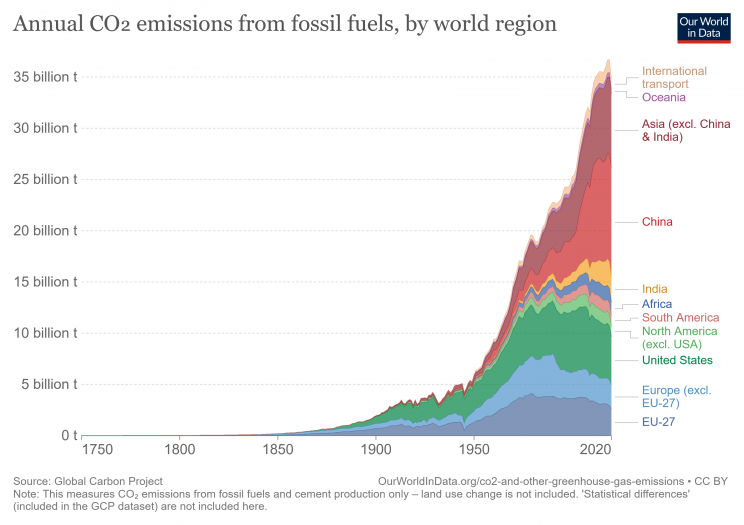
Many CC techniques mimic this process by scrubbing CO2 from the atmosphere and then sequestering it underground again. Others attempt to use the captured carbon products to enhance agriculture reforestation efforts and restore natural vegetation and greenspaces (known as biosequestration).
Other operations use the captured carbon to generate bioenergy or to create biofuels. In this case, carbon is captured through biomass (algae, cyanobacteria, plants, etc.) which absorbs CO2 through photosynthesis. Heat and energy can be extracted from the biomass through combustion, fermentation, or biochemical processes to generate electricity or create cleaner-burning fuels (biodiesel, ethanol, methanol, etc.)
CC methods are designed to capture CO2 before it enters the atmosphere, while CDR methods aim at removing emissions that are already there. Since CC is focused on capturing new emissions, it will never be a net-negative technology. For Climate Restoration, CDR must be the way forward since it is the only existing method for dealing with legacy emissions.
In short, preventing a Climate Change catastrophe means that 95 percent of carbon emissions that we’ve already burned need to be removed from the atmosphere by 2050. According to the F4CR, this means using CDR in conjunction with net-zero emission measures to remove one trillion tons – or one thousand gigatons (GT) – by mid-century. As Wayman summarized:
“We believe that we need to remove fifty gigatons a year for the twenty-year period: 2030 to 2050. So we see this decade that we’re in right now as the scale-up period, where the testing, the innovation, etc., are going to be taking place. What needs to happen is by 2030, [we need] to arrive at what we call ‘restoration scale,’ where about fifty gigatons are being removed annually. Over a twenty-year period, that would total one trillion tons of CO2.”
As for the technology and methods we could use to do this, there are several to choose from.
Notable examples
Some examples of CDR include ClimeWorks’ Orca facility, a Direct Air Capture (DAC) plant located in Reykjavik, Iceland, that became operational in September 2021. This facility (and future ones created by Climeworks) uses an industrial selective filtration process to absorb CO2 from the atmosphere.
The filters are then subjected to heat to release the CO2 in high purity and concentrations, then mixed with water and pumped underground, where it will react with basalt rock to form carbonate rock within a few years. The operation is powered by natural geothermal energy, where heat from the planet’s interior is harnessed to generate electricity.
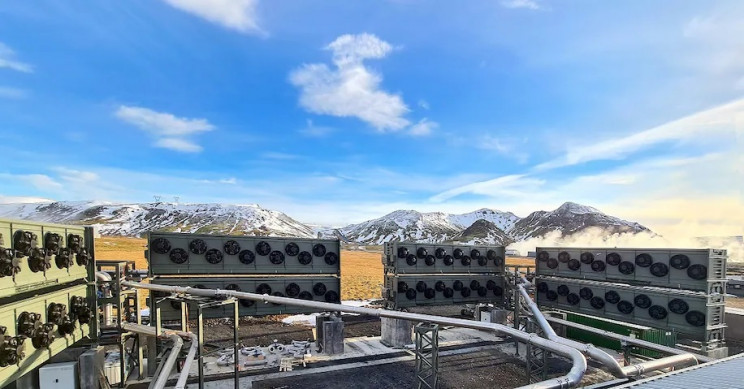
This is an especially abundant energy source in Iceland because of how volcanically active the island nation is. Therefore, similar operations could be built wherever volcanic activity is present, like East Asia, the Central and South Pacific, Alaska, and even Antarctica!
You also have carbon capture operations adapted for urban living at the other end of things. For example, there’s the Manuel Gea González Hospital in Mexico City, designated as the most polluted megacity in the world in 1992. In 2013, the hospital received an expansion that included a facade designed by Elegant Embellishments of Berlin.
This roughly 26,910 square foot (2,500 m2) façade consists of modules coated with a special pigment known as prosolve370e. When exposed to ultraviolet light, this pigment absorbs air pollution and breaks it down into CO2 and water. These can then be processed to create biofuels.
There’s also the Palazzo Italia in Milan, Italy, which was unveiled during the 2015 Milan Expo. The most notable feature of this building is the organic-looking cladding that covers the entire facade and resembles tree branches. This concrete cladding (made from 80 percent recycled materials) captures urban air pollution by adding titanium oxide.
Like prosolve370e, this substance uses solar energy to create oxidizing reagents, breaking down CO2 and effectively cleaning the air. Another innovative concept is the “artificial tree,” a form of CC that relies on various methods to remove CO2 from the greatest source of all – urban environments!
One of the most well-known examples is the concept created by physicist and engineer Klaus Lackner, director of the Center for Negative Carbon Emissions and a professor at Arizona State University. Over the past ten years, Lackner and his colleagues at ASU have developed the Mechanical Tree™, which uses a special resin that removes CO2 from the air 1,000 times more efficiently than real trees.
Another option, as advocated by researchers from the Institution of Mechanical Engineers in London, UK, is to install “algae-based photobioreactors” on buildings. These are essentially containers containing algae that absorb CO2 from the air through photosynthesis. There are even plans to introduce genetically-engineered plants and trees to have enhanced photosynthesis properties.
However, not all methods are equally viable from an economic standpoint, which limits their utilization. For a method to be economically viable, it needs to be readily available, scalable, and marketable.
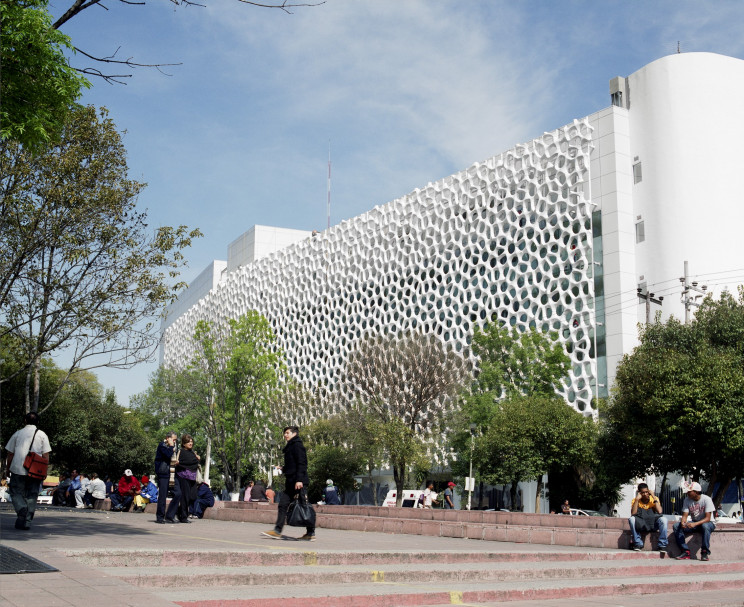
The economics of CC and CDR
When it comes right down to it, economics and saving the planet go hand in hand because they have to. Otherwise, solutions to the climate crisis will not materialize. As noted, the challenge facing the world’s industrialized nations is to remove 50 GT of CO2 from the atmosphere every year until a total of one trillion tons is removed.
At present, the cost of carbon capture is estimated at $600 a ton, which means that the world’s industrialized nations would need to commit to spending a total of $30 trillion a year! To give you an idea of how much that is, the Gross Domestic Product (GDP) of the entire world was close to $95 trillion in 2021.
That means the world will need to commit about 30 percent of its annual wealth to this effort! Even with our long-term survival and livelihood at stake, this price tag is too prohibitive for governments to shoulder. While our current GDP represents a nearly tenfold increase since 1985 ($12.5 trillion), climate restoration cannot wait for capture and removal technologies to become more affordable.
However, these costs can be reduced significantly with the right marketing and commercialization of CC and CDR technology. The same way that the commercialization of space and new technologies (e.g., reusable rockets, spaceplanes, 3-D printing, etc.) have led to drastically lower launch costs. The same process can help CC and CDR to become lucrative commercial industries.
Herein lies another ambitious goal that F4CR and other climate restoration organizations have set: bring the cost down to $100 a ton by 2025. With that goal accomplished, scalable methods can be implemented with a price tag of around $5 trillion a year (less than 5 percent of annual GDP), with a total cost of $100 trillion between 2030 and 2050.
While that’s hardly cheap, it’s certainly possible. And when you consider how much money the nations of the world spend on technologies that divide us and worsen the climate situation, it becomes clearer that the commitment needs to be made.
According to the Stockholm International Peace Research Institute (SIPRI), global military spending was almost $2 trillion in 2021 alone – or roughly 2.4 percent of annual GDP. The vast majority was spent by the industrialized nations of the world, which fall into the same old alliances that have existed since the Cold War:
- United States ($778 billion)
- China ($252 billion)
- India ($72.9 billion)
- Russia ($61.7 billion)
- The United Kingdom ($59.2 billion)
- Saudi Arabia ($57.5 billion)
- Germany ($52.8 billion)
- France ($52.7 billion)
- Japan ($49.1 billion)
- South Korea ($45.7 billion)
Another important expenditure is the world’s global annual subsidies on fossil fuels. According to a 2021 report by the International Monetary Fund (IMF), titled “Still Not Getting Energy Prices Right,” subsidies in 2020 were $5.9 trillion, or about 6.8 percent of global GDP. What’s worse, they claim, these are expected to rise to 7.4 percent by 2025.
According to the report, the vast majority of these subsidies are dedicated to dealing with the environmental impact of petroleum and not making oil and gas affordable! Hence, they advocate for much-needed change, and soon:
“Just 8 percent of the 2020 subsidy reflects undercharging for supply costs (explicit subsidies) and 92 percent for undercharging for environmental costs and foregone consumption taxes (implicit subsidies). Efficient fuel pricing in 2025 would reduce global carbon dioxide emissions 36 percent below baseline levels, which is in line with keeping global warming to 1.5 degrees, while raising revenues worth 3.8 percent of global GDP and preventing 0.9 million local air pollution deaths. Accompanying spreadsheets provide detailed results for 191 countries.”
In short, the nations of Earth are spending a total of $7.9 trillion, or 9.2 percent of their annual GDP, on technologies used to kill each other and the very fuels that are driving us towards ecological ruin. Under those circumstances, it’s not hard to see how a 5 percent that would ensure our survival and ability to thrive is not that much to ask. These stats also show that the resources are there. They’re just not directed to where they need to be.
Four criterion
For the F4CR, the key to widespread implementation of carbon removal strategies comes down to four priorities: Permanent, Scalable, Financeable, and Equitable (P-S-F-E). As they explain in their White Paper, Permanent refers to the ability to capture CO2 and “keep it out of circulation for at least a century.” This commitment is one of the key differences between CC and CDR.
Currently, there are marketable solutions to capture carbon, such as converting it into biofuels for automobiles, jets, etc. In recent news, SpaceX founder and CEO Elon Musk announced that his company would be incorporating CC technology to manufacture rocket fuel for his planned fleet of Starships.
There’s also how many soft drink manufacturers today use recycled CO2 to make their beverages. While these methods are beneficial and serve a noble purpose, they involve re-releasing some of the captured CO2 back into the air. Even if biofuels and CC products burn cleaner and require less CO2 to process, they aren’t enough to tackle the 1 trillion ton elephant in the room.
Scalable means that the solution can be scaled up within a decade to remove and store at least 10 Gt of CO2 per year. In short, the technology or process needs to be easily adapted to large-scale operations. As F4CR Chief Operations Officer Dr. Erica Dodds explained in one of the Foundation’s educational videos, this criterion is illustrated by comparing carbon nanotube manufacture to carbonate rocks.
Whereas carbon nanotubes are a wonder material with many applications in science and engineering, their market is rather small. On the other hand, synthetic carbonate rocks show tremendous promise for the future construction industry. These rocks can be fashioned by combining atmospheric CO2 with calcium and magnesium to create limestone and dolomite rock.
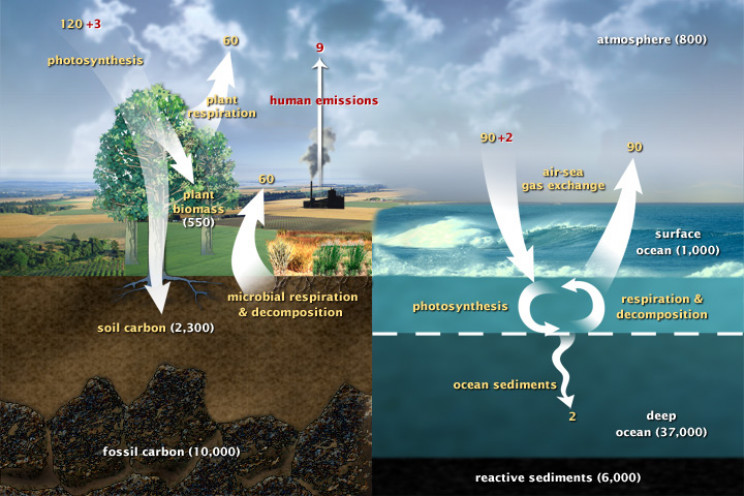
This can then be fashioned into bricks and used for construction, consuming an estimated 50 billion tons (50 GT) of rock per year. Said Dr. Dodds:
“We know that synthetic limestone, which two companies are now working on, is about 44 percent CO2 by weight. So that’s not quite up to our very high bar of [50] gigatons per year, but it’s pretty darn close. So we’re looking for things like that where the market is massive, and the amount of carbon that can be stored in that market is massive. That’s not to say that we don’t care about the other, smaller solutions out there, but just that we want to make sure that the focus is staying on the things that can have the biggest impact.”
Another fitting example is ocean vegetation restoration, a tested and scalable solution known for its ability to capture excess carbon. Aside from increasing natural carbon sinks, increasing the amount of seaweed, kelp, and other maritime plants in coastal areas can also have economic benefits – restored fisheries, fertilizer, and nutrition.
“There’s no silver bullet. But there are things that hold a great deal of potential and are really worth paying attention to, developing, and studying more to make sure [they are viable and safe],” said Wayman. “In terms of the climate restoration timeline, these are our years right now, to be studying those things, to perfect the processes, and to begin implementing so that by 2030, solutions can be operating at scale.”
Financeable refers to methods that can produce something that can satisfy a large and existing market – i.e., where funding is already available or can be mobilized. As Dr. Dodds added, this means looking beyond government financing and efforts to encourage growth in this sector:
“There are a lot of people doing incredible work on carbon pricing and tax incentives for carbon capture. While we see the huge value in public financing for climate restoration, our timeline is just too short for us to put all of our eggs in that basket. So, we’re looking for things to start off with that are commercially viable, that have funding already available, and can be mobilized quickly.”
Equitable conveys that the solution considers both the benefits and risks to all communities, especially for vulnerable or oppressed groups. While climate change is a universal problem, it has and will continue to disproportionately affect individuals with the least means to confront the intersectional climate crises as they exacerbate. To ensure equitable solutions and not one community being left behind, it is essential to assess who benefits and who is negatively impacted by each project. As Wayman explains:
“The transparency of this information must be disclosed, specifically to frontline communities. The involvement of frontline, marginalized, and vulnerable communities as leaders and stakeholders in projects will be paramount to ensuring their needs and concerns are prioritized in the development and deployment of any solution.”
Prioritizing equitable and just climate restoration principles will undoubtedly be a lifelong, perhaps even several lifetimes long, pursuit. The process should include fair decision-making procedures, fair allocation of benefits, amends of previous harm, and transformative justice that addresses structural power imbalances. Educating communities and providing advocates with the bandwidth to advocate where information and processes are lacking is also necessary.
Spreading the word
Looking to the short and long term, the F4CR is seeking to build what they refer to as a “Global Climate Restoration Ecosystem.” Once again, their strategy comes down to multiple criteria: Education, Advocacy, and Solutions.
In terms of Education, the F4CR maintains several outreach efforts, which include conferences, briefings, training, papers, lesson plans, and resources (which are listed in the White Paper). There’s also the Foundation’s youth outreach effort, Youth Leaders for Climate Restoration (YL4CR). This 13-week program is essentially a “train the trainer” program for youths aged 13 to 24.
Upon completion, participants are eligible for certification as a “Climate Restoration Advocate.” This program also offers internship and scholarship opportunities with F4CR and its partners. As youth activist Greta Thunberg has demonstrated, educated youth can be particularly influential on the world stage.
Their youth program is partnered with Girl Up, an international non-profit dedicated to advancing girls’ skills and rights, and creating girl leaders worldwide. The F4CR is also partnered with the UN’s Envoy on Youth, which deals with developmental issues important to people aged 10 to 24 (90 percent of which live in developing nations).
The F4CR also maintains local chapters in cities worldwide, including in the United States, the Netherlands, Italy, Nigeria, Liberia, Uganda, Madagascar, and Australia. They also conduct the Youth Leaders for Climate Restoration World Tour, a monthly webinar event where members of the YL4CR program can discuss Climate Restoration efforts with people worldwide.
F4CR’s Advocacy efforts include the Global Carbon Removal Partnership (GCRP), a global multi-stakeholder partnership they co-founded with the Thunderbird School of Global Management – at Arizona State University (ASU). This partnership brings scientists, innovators, policymakers, faith leaders, students, and governments together to foster solutions for Climate Change.
The F4CR is also partnered with the Earth Day Network, the Future Coalition, and the Rotary Climate Action Team Network. They participate in important international events like the World Economic Forum (WEF) and the UN Climate Change Conference of the Parties (COP).
The GCRP was launched in November of 2021 during the 26th annual UN Conference for Climate Change (COP26) in Glasgow, UK. Since 2019, the F4CR has held the Global Climate Restoration Forum, which the organization hopes to hold in-person in New York in September 2022.
By working with the UN and different member states (on the federal and local level), the F4CR and its partners hope to get Climate Restoration on the IPCC’s agenda – which is currently focused on Mitigation and Adaptation. Said Wayman:
“The IPCC is largely limited to peer-reviewed research and science that is already out there. And there’s just an insufficient level at this point on Climate Restoration for the IPCC to even have a mandate to look at it. Having that research would be advantageous on a number of levels.
“Just the added credibility that peer-reviewed science provides to anything would certainly be helpful and very welcome in this case. So that’s something we’re paying close attention to and working with various partners on getting that off the ground and out there into the scientific community.”
In terms of Solutions, they promote research, development, and investment in Climate Restoration solutions through marketplace analysis. This is done through their advocacy arm and through a publicly-accessible portfolio they call the Solutions Series, where CDR solutions are listed and rated against F4CR’s four established criteria.
These efforts are by no means taking place in a vacuum. Today, national governments, the United Nations, non-profit organizations, foundations, entrepreneurs, and committed activists are working to find ways out of the current climate crisis.
Take HeroX, the world’s largest platform for crowdsourcing solutions. With their longtime partner, Singapore’s National Water Agency (PUB), they launched the Carbon Zero Grand Challenge in October of 2021. With a prize purse of 6.5 million Singapore dollars (approx. $4,8 million USD), this competition is seeking innovative solutions that can help the PUB achieve net-zero emissions by 2050 and can be adapted to water facilities worldwide.
In addition, Elon Musk and the Musk Foundation recently partnered with the XPrize Foundation to launch the Carbon Removal Prize. This four-year global competition is the largest incentive prize in history, with $100 million in prizes for solutions that can pull carbon dioxide directly from the atmosphere or oceans, and sequester it durably and sustainably.

For decades, scientists have warned about the potential consequences of unchecked Climate Change. Since the turn of the century, the signs have become impossible to ignore. In recent years, record temperatures, heatwaves, drought, wildfires, severe storms, and flooding have become progressively worse. Worse yet, the damage and death toll they inflict are merely a taste of what’s to come.
Our current efforts to expedite carbon removal are more than just a call to action. They are a sober acknowledgment of the stark reality we face. Hence why international, non-partisan, and non-profit efforts that are characterized by outreach, partnerships, and cooperation are essential. This problem affects everyone and no one can address it in isolation.
It is only through cooperation, innovation, and a common commitment to the future that humanity and the natural environment can thrive, in this century and beyond.




